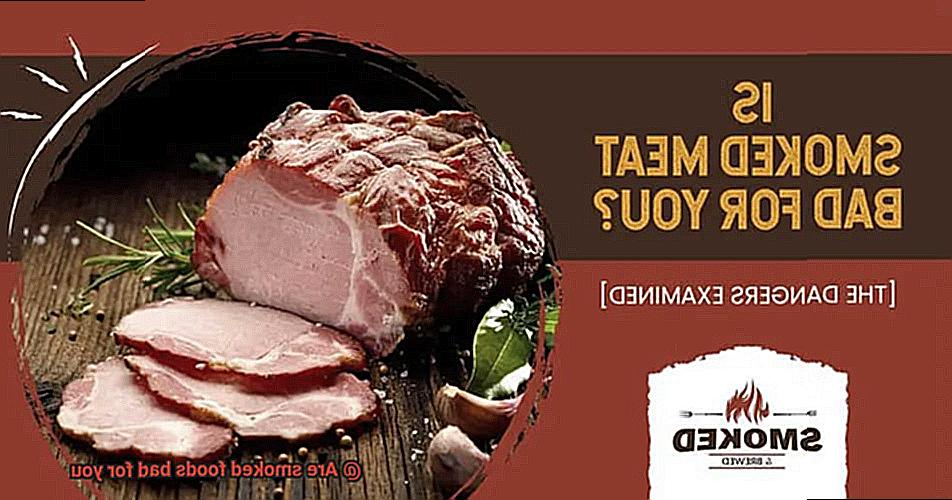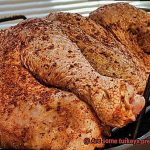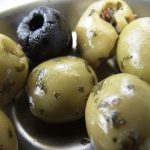Do you crave the rich, smoky flavor of a perfectly cooked brisket or a succulent piece of smoked salmon? There’s something irresistible about the aroma and taste of food that’s been cooked in a smoker. However, you may have heard rumors that smoked foods are bad for your health. So, what’s the truth? Are smoked foods really as harmful as some people claim?
Smoking food is an ancient technique that has been used for centuries to preserve and flavor meat, fish, and vegetables. When done correctly, smoking can enhance the taste, texture, and nutritional value of food. But when meat is exposed to excessive smoke, it can lead to the formation of dangerous chemicals like polycyclic aromatic hydrocarbons (PAHs) and heterocyclic amines (HCAs), which have been linked to cancer and other health problems.
But don’t toss out your smoker just yet. By using high-quality wood and following proper cooking techniques, you can significantly reduce the risk of harmful chemicals forming in your food. And not all meats are created equal – some are safer to smoke than others.
So, are smoked foods bad for you? The answer isn’t black and white. In this post, we’ll explore the potential risks and benefits of smoking food and give you tips on how to safely enjoy your favorite smoked dishes. Whether you’re a BBQ aficionado or just curious about the health effects of smoked foods, keep reading to learn more.
Contents
The Process of Smoking
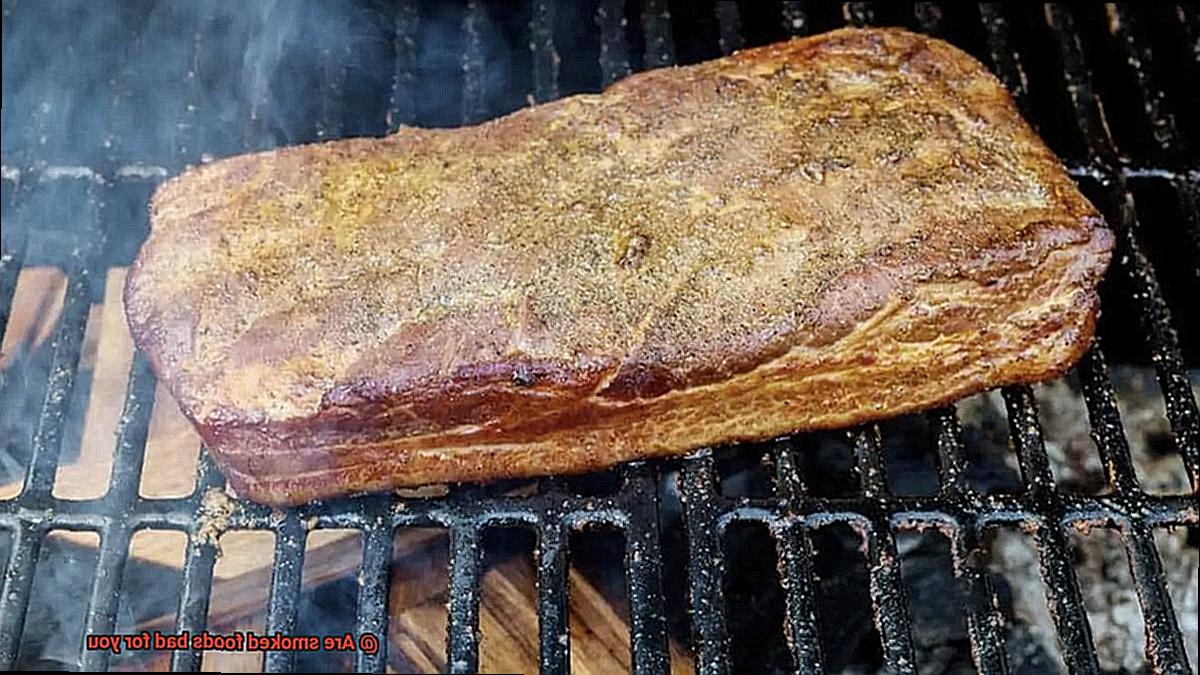
Smoking has been a cherished method of food preservation and flavor enhancement for centuries. The process entails exposing the food to smoke from burning wood or charcoal, which penetrates the food, giving it a unique and mouth-watering taste and aroma. However, smoking involves cooking the food at low temperatures for an extended period, which can negatively impact its nutritional value.
Despite the delectable taste that smoking imparts on food, there are potential health risks associated with this cooking method. Harmful chemicals such as polycyclic aromatic hydrocarbons (PAHs) and heterocyclic amines (HCAs) can be produced when smoke reacts with the fat and protein in the food. Research has shown that these chemicals are cancer-causing agents. Smoked meat is particularly risky since it’s cooked at low temperatures for an extended period.
Nitrates and nitrites are also used in the curing process to preserve the color and flavor of smoked meat. Unfortunately, these chemicals have been linked to an increased risk of cancer. They can also react with other compounds in the food to produce nitrosamines that are carcinogenic.
Fortunately, not all smoked foods are bad for you. The type of wood used in smoking, temperature, and duration of smoking can affect the nutritional value and chemical composition of the food. Additionally, some types of smoked foods, like fish, contain beneficial nutrients like omega-3 fatty acids.
To minimize the risks associated with smoked foods, it’s essential to use proper smoking techniques and be mindful of the type of wood used in smoking. Using safer smoking methods like cold smoking or hot smoking at temperatures between 165°F and 185°F can reduce the formation of harmful compounds. Fruitwoods or other hardwoods that produce less smoke like apple or cherry are recommended for smoking foods.
Health Risks of Smoked Foods
Smoking food has been a beloved cooking method for centuries. The smoky flavor and aroma that it imparts to meat and fish are unmatched by any other cooking technique. However, recent studies have raised concerns about the potential health risks associated with smoked foods.
One of the major health risks of smoked foods is the presence of harmful chemicals, namely polycyclic aromatic hydrocarbons (PAHs) and heterocyclic amines (HCAs). PAHs are formed when fat drips onto hot coals or wood chips, creating smoke that contains these harmful carcinogens. When the smoke adheres to the surface of meat or fish, it can increase the risk of cancer if consumed in high levels. HCAs, on the other hand, are formed when meat is cooked at high temperatures, such as during grilling or smoking. These compounds have also been linked to an increased risk of cancer.
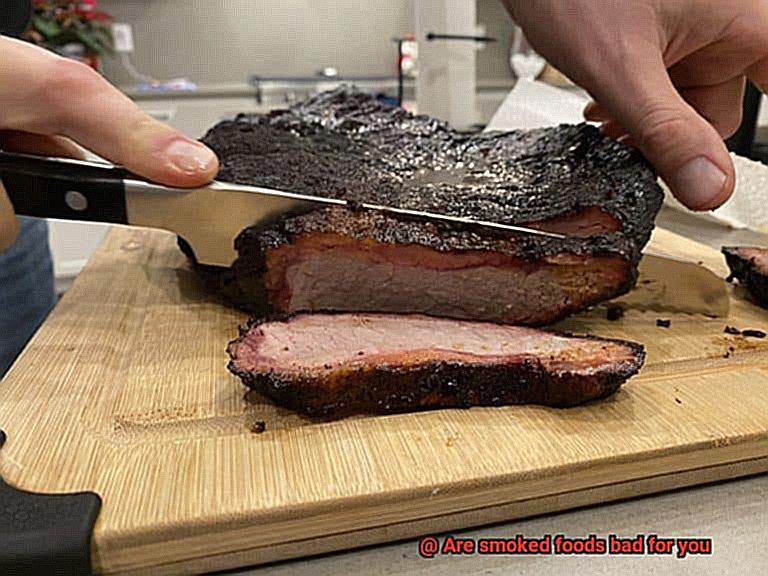
In addition to PAHs and HCAs, smoked foods may also contain high levels of sodium and nitrates. These additives are commonly used in the smoking process to enhance flavor and preserve the food. However, excessive consumption of sodium has been linked to high blood pressure and an increased risk of heart disease. Nitrates, meanwhile, have been linked to an increased risk of certain types of cancer.
To minimize the risks associated with smoked food consumption, here are some tips:
- Limit your intake of smoked foods and opt for healthier cooking methods such as grilling or baking.
- Use safer wood options like cherry or apple when smoking your food. Avoid using wood from conifers like pine or spruce, which can release harmful chemicals when burned.
- Marinate meat before smoking it to reduce the formation of harmful compounds.
- Trim fat from meat before smoking it to reduce the production of PAHs.
- Choose leaner cuts of meat to reduce the production of HCAs.
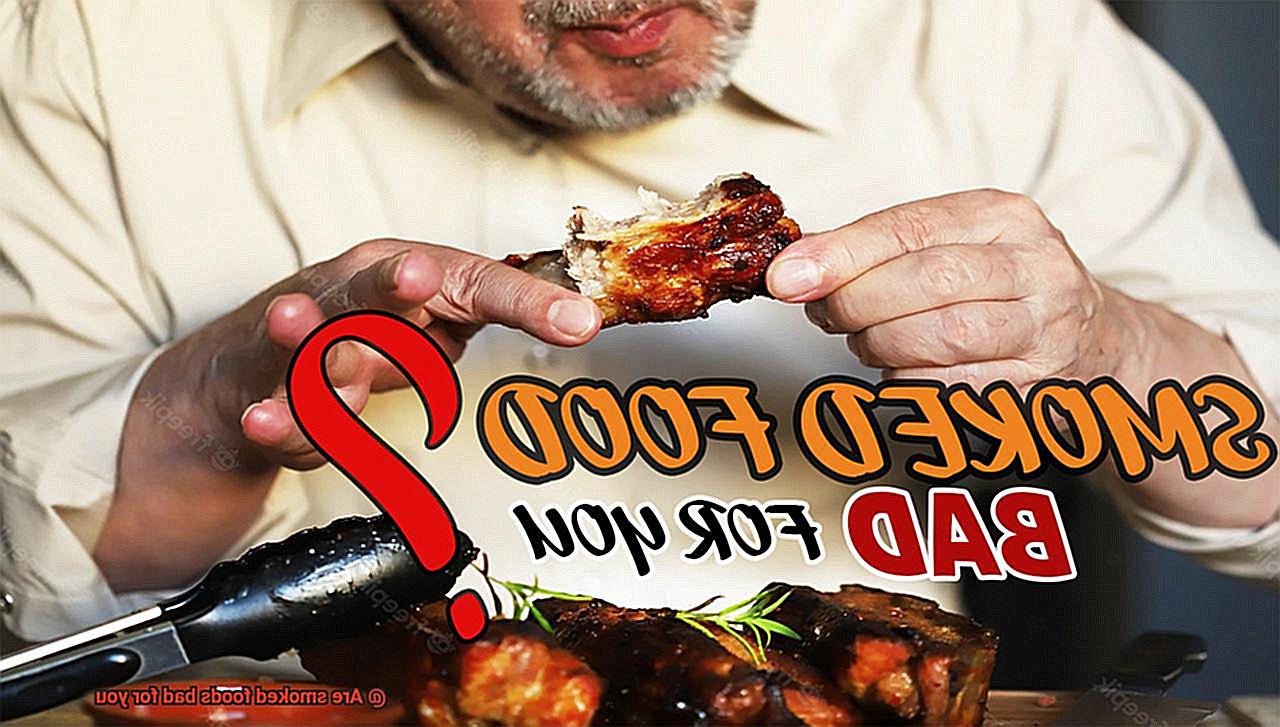
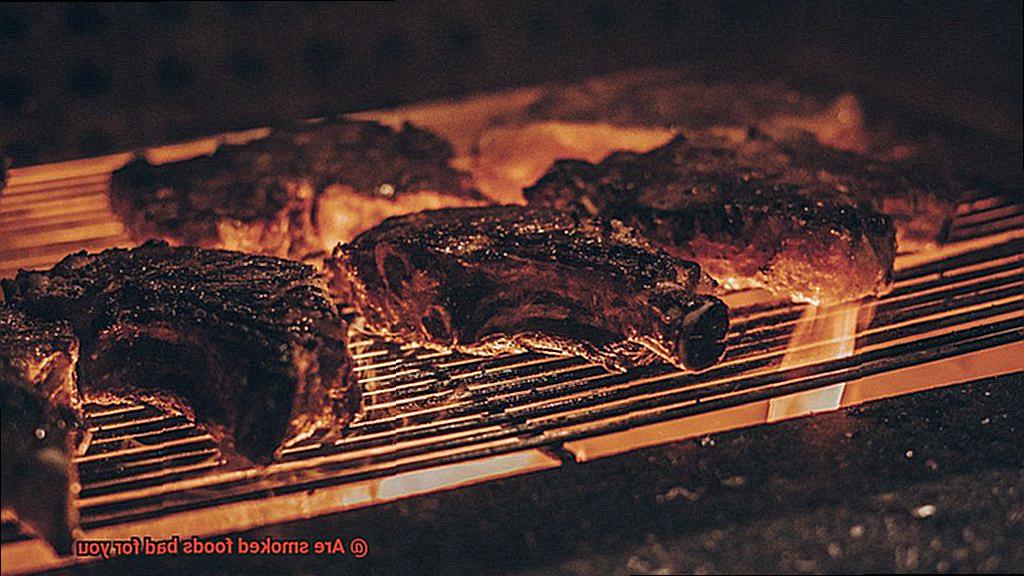
Different Types of Smoking Methods
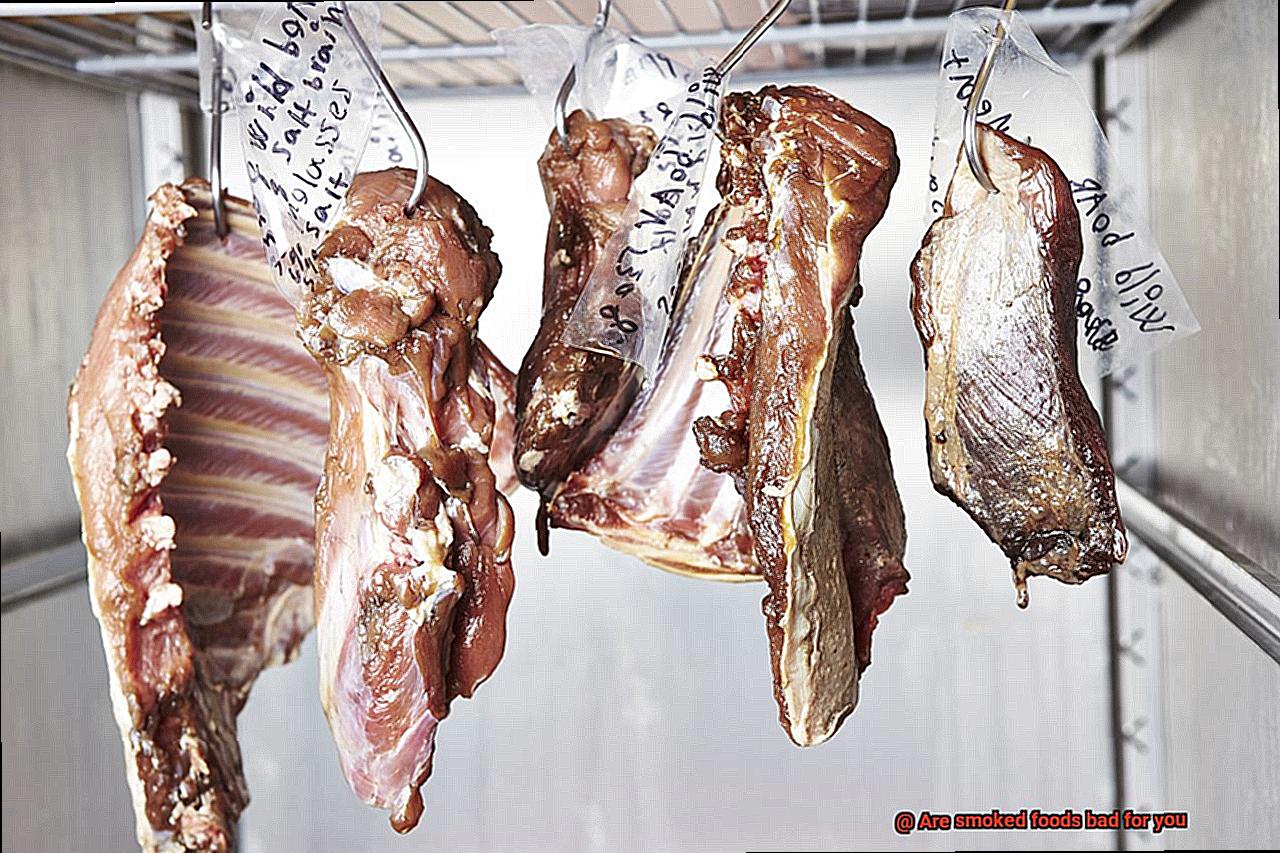
Smoking food has been a popular method of preservation for centuries. It not only extends the shelf life of meats, fish, and other perishable foods but also adds a unique smoky flavor. However, there are different types of smoking methods that can affect the flavor and safety of your food.
Hot Smoking
This method involves cooking the food at temperatures between 165°F to 185°F while exposing it to smoke generated by burning wood chips or pellets. Hot smoking is commonly used for cooking fish, poultry, and other meats. The high temperature fully cooks the food while also imparting a smoky flavor. The length of time the food is smoked depends on the type of food and the desired level of smokiness.
Cold Smoking
Unlike hot smoking, cold smoking involves exposing the food to smoke at temperatures below 100°F for several hours or even days. Cold smoking is used for preserving fish, cheese, and other foods that do not require cooking. It does not cook the food but rather infuses it with a smoky flavor. Cold smoking requires more time than hot smoking and should be done in a well-ventilated area to prevent the growth of harmful bacteria.
Smoke Roasting
This method combines hot smoking and roasting. The food is first smoked at low temperatures for several hours before being roasted at higher temperatures to finish cooking. Smoke roasting is commonly used for cooking large cuts of meat such as brisket and pork shoulder. The low-temperature smoking imparts smoky flavor while roasting at higher temperatures results in tender meat with a crispy outer layer.
Liquid Smoke
This method involves creating smoke by burning wood chips or sawdust and capturing the smoke in a condenser. The resulting liquid is then added to food products to give them a smoky flavor. While liquid smoke can be a convenient option for those who don’t have access to traditional smoking methods, some people argue that it doesn’t provide the same depth of flavor as traditional smoking.
It’s important to note that the type of wood used for smoking can affect the safety of the food. Hardwoods such as oak, hickory, and mesquite produce more smoke than fruitwoods such as apple and cherry, resulting in higher levels of carcinogens. Therefore, it’s recommended to use fruitwoods or other hardwoods that produce less smoke when smoking foods.
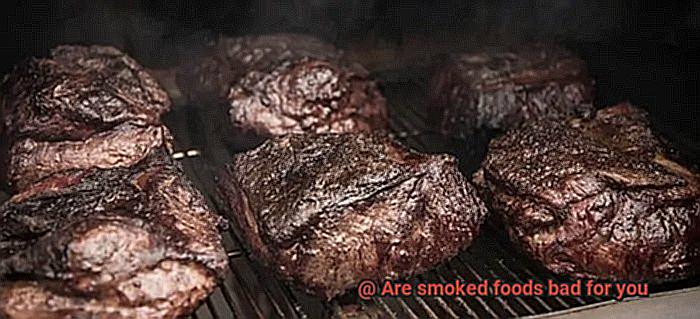
While smoked foods can be delicious, there are some concerns about their potential health risks. The smoke produced during the smoking process contains polycyclic aromatic hydrocarbons (PAHs) and other compounds that have been linked to cancer and other health problems. However, the risk of harm from eating smoked foods is generally considered to be low as long as they are consumed in moderation as part of a balanced diet.
Choosing the Right Wood for Smoking
If you want to elevate your smoking game and create mouth-watering, flavorful meats and vegetables, then you need to know the importance of choosing the right wood. Not all woods are created equal when it comes to smoking food, and selecting the wrong type could lead to harmful fumes and toxins.
So, let’s dive into the most commonly used woods for smoking: hickory, mesquite, oak, apple, cherry, and pecan. Each wood produces a unique flavor and aroma that can enhance different types of meats and vegetables.
Hickory is renowned for its strong and robust smoky flavor. This wood is perfect for smoking pork and beef because it adds a bold flavor that can stand up to these meats. In contrast, mesquite has a distinct smoky flavor that pairs well with beef, poultry, and fish.
Oak produces a mild smoke flavor that complements most types of meat. It’s a versatile wood that can be used for smoking anything from chicken to brisket. Fruitwoods such as apple and cherry are popular choices for smoking poultry and pork because they produce a sweet and fruity flavor. And if you’re looking for a rich and nutty flavor, then pecan wood is your go-to.
But be warned – avoid using softwoods such as pine, fir, or spruce when smoking food. These woods contain resin and sap that can produce harmful fumes when burned. Treated wood such as pallets or construction lumber should also never be used for smoking food because they can contain dangerous chemicals.
Moderation is Key
Don’t worry, moderation is key when it comes to enjoying your favorite smoky dishes.
It’s true that smoked foods can contain harmful compounds such as polycyclic aromatic hydrocarbons (PAHs) and heterocyclic amines (HCAs). However, the key is to consume them in moderation rather than completely avoiding them.
While some studies have linked these compounds to an increased risk of cancer, the risk of developing cancer from consuming smoked foods is relatively small compared to other factors such as genetics, lifestyle choices, and environmental factors.
But what does moderation mean when it comes to smoked foods? Firstly, it means choosing the right type of meat or fish. Not all smoked foods are created equal – some types are less likely to contain harmful compounds than others. For example, smoking salmon at a low temperature for a short period of time is less likely to produce harmful compounds than smoking beef brisket at a high temperature for several hours.
Moderation also means consuming smoked foods as part of a balanced diet. Consuming large amounts of smoked foods on a regular basis can increase your risk of developing cancer and other health problems. Therefore, it’s important to balance your consumption of smoked foods with other healthy foods such as fruits, vegetables, whole grains, and lean proteins.
Benefits of Smoked Foods
And it’s not just about the taste, there are numerous benefits to this cooking method that make it stand out from the rest.
Firstly, smoking food adds a unique and complex flavor to the dish. Meat lovers will be pleased to know that smoking can infuse a range of flavors into the meat that cannot be achieved through other cooking methods. The smoke from wood chips used in smoking can penetrate the meat, giving it a rich, smoky flavor that is unparalleled.
But that’s not all – smoking can also extend the shelf life of food. By inhibiting the growth of bacteria and fungi, smoked foods can stay fresh for longer periods. This is particularly beneficial for meats, which are highly perishable and susceptible to spoilage.
Moreover, smoking food is a natural way to reduce the risk of foodborne illnesses. The high temperatures used in smoking can kill harmful bacteria and other pathogens present in the food, making it safer to eat. This significantly reduces the risk of food poisoning, especially for those who may have weaker immune systems.
For those who are health-conscious, smoking is an ideal cooking method as it doesn’t require added oils or fats. The excess fat in the meat drips off during the smoking process, making it a great low-fat cooking method. Plus, with a variety of wood chips available for smoking, you can experiment with different flavors and find one that suits your taste buds and dietary requirements.
However, while there are many benefits to smoked foods, moderation is key. Studies suggest that excessive consumption of smoked foods may increase the risk of certain types of cancer. So enjoy smoked foods in moderation as part of a balanced diet.
Alternatives to Smoked Foods
The potential health risks associated with consuming smoked foods regularly can be a cause for concern. Fortunately, there are several alternatives to smoked foods that can provide a similar taste without the added health worries.
One alternative to smoked foods is to use a dry rub or marinade to add flavor to grilled or roasted meats. Mixing herbs, spices and seasonings with olive oil or vinegar and applying it to the meat before cooking not only adds flavor but also helps to keep the meat tender and moist.
Another option is to use wood chips or pellets that have been soaked in water or other liquids. This method provides a similar smoky flavor without the harmful chemicals produced by burning wood. Popular options include applewood, hickory, and mesquite.
For those who prefer vegetarian or vegan options, there are plenty of alternatives that can provide a smoky flavor as well. Smoked tofu, tempeh, and vegetables such as eggplant or portobello mushrooms can all be grilled or roasted with a dry rub or marinade for added flavor.
In addition to these alternatives, there are other methods you can explore such as using smoked salts and seasonings, liquid smoke, or smoking with non-toxic materials like tea leaves or hay.
It’s important to remember that while smoked foods may provide a unique taste experience, there are several alternatives that can provide similar flavors without the potential health risks. By exploring these options, individuals can still enjoy delicious meals while making healthier choices for themselves and their families.
YWE1q7n4Wfc” >
Conclusion
In conclusion, the answer to whether smoked foods are bad for you is not a simple one. Smoking is an ancient technique that can transform the taste, texture, and nutritional value of food. However, if done incorrectly, it can also lead to the formation of harmful chemicals like PAHs and HCAs.
But fear not. With a few simple adjustments, you can significantly reduce the risks associated with smoking your food. By using high-quality wood and following proper cooking techniques, you can ensure that your food is free from harmful chemicals.
It’s important to remember that not all meats are created equal – some are safer to smoke than others. Additionally, moderation is key when it comes to enjoying smoked foods as part of a balanced diet. Opting for healthier options like cold smoking or hot smoking at lower temperatures with fruitwoods or hardwoods that produce less smoke can greatly reduce the formation of harmful compounds.
While there are potential health risks associated with smoked foods, there are also numerous benefits such as adding unique and complex flavors to dishes, extending shelf life, and reducing the risk of foodborne illnesses. If you’re looking for alternatives to traditional smoking methods, dry rubs or marinades, soaked wood chips or pellets, and vegetarian options like smoked tofu or vegetables provide similar flavors without any potential health risks.
Ultimately, it’s up to individuals to make informed choices about their diets. By being mindful of proper smoking techniques and choosing healthier options in moderation, you can enjoy delicious smoky dishes while minimizing any potential harm to your health.

